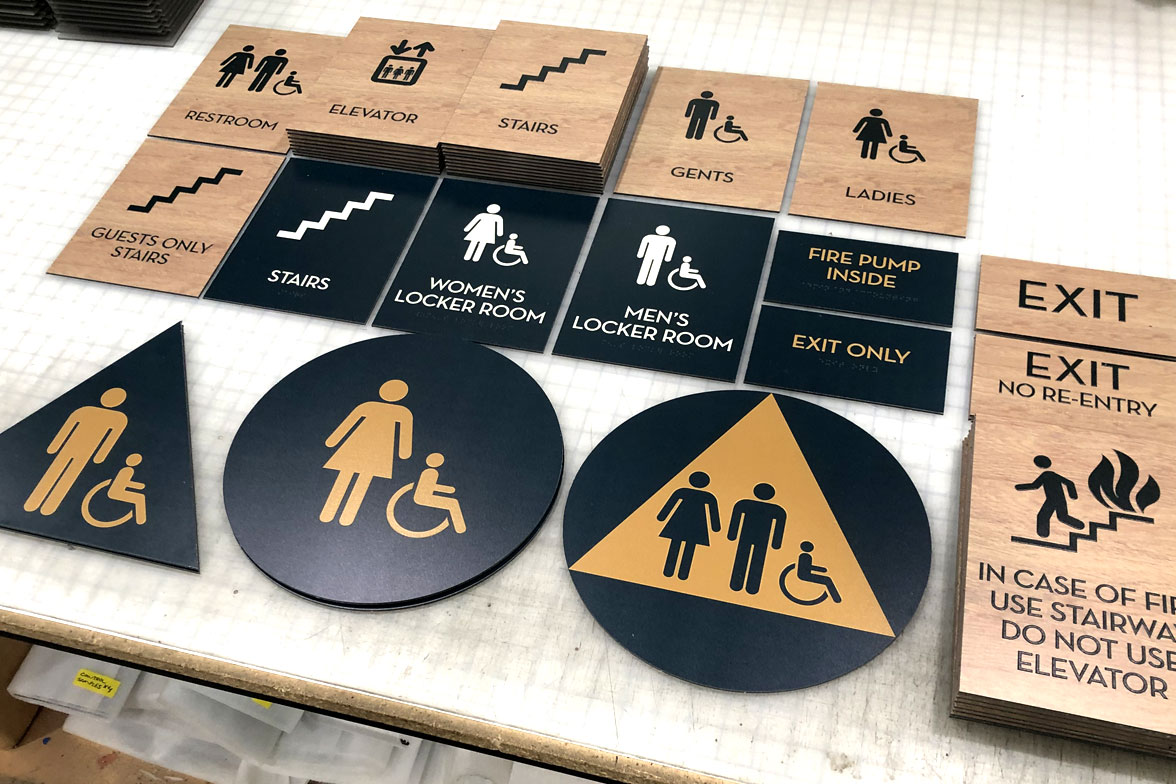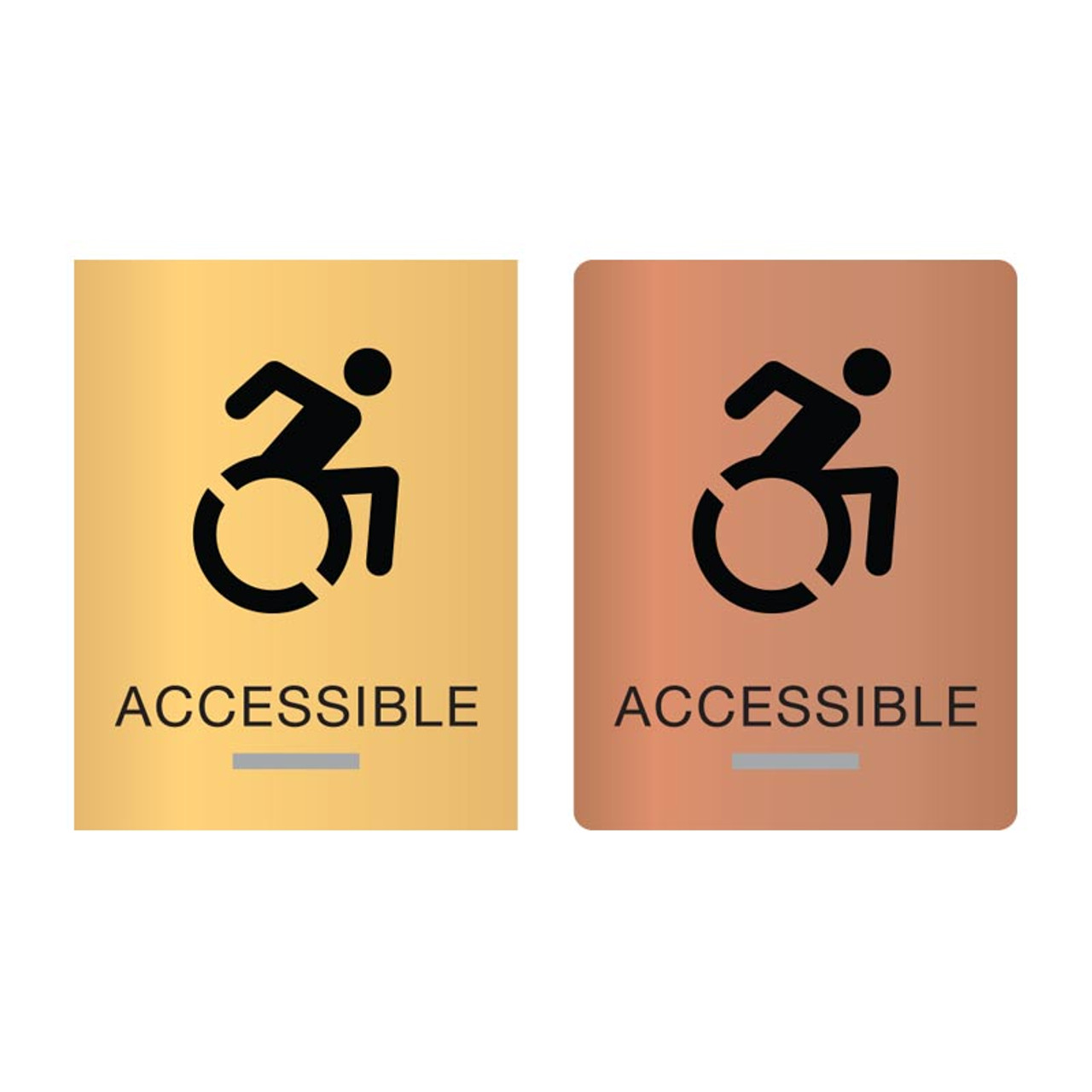Tailoring ADA Signs to Satisfy Your Details Requirements
Tailoring ADA Signs to Satisfy Your Details Requirements
Blog Article
Checking Out the Secret Features of ADA Indicators for Boosted Accessibility
In the realm of access, ADA signs offer as silent yet effective allies, guaranteeing that rooms are accessible and comprehensive for people with disabilities. By incorporating Braille and tactile elements, these indications break barriers for the aesthetically damaged, while high-contrast shade systems and clear typefaces provide to diverse visual requirements.
Significance of ADA Compliance
Making certain conformity with the Americans with Disabilities Act (ADA) is important for fostering inclusivity and equal gain access to in public rooms and work environments. The ADA, passed in 1990, mandates that all public facilities, companies, and transportation solutions suit individuals with impairments, ensuring they delight in the very same legal rights and opportunities as others. Compliance with ADA standards not just satisfies legal responsibilities yet additionally boosts an organization's reputation by demonstrating its dedication to variety and inclusivity.
One of the key aspects of ADA compliance is the execution of obtainable signs. ADA signs are developed to guarantee that people with impairments can conveniently browse through spaces and buildings. These indicators must abide by certain guidelines pertaining to dimension, typeface, shade comparison, and positioning to guarantee presence and readability for all. Properly executed ADA signs aids eliminate barriers that individuals with impairments often encounter, thereby promoting their freedom and self-confidence (ADA Signs).
Furthermore, sticking to ADA guidelines can reduce the risk of prospective fines and legal consequences. Organizations that fall short to follow ADA standards might face legal actions or penalties, which can be both monetarily troublesome and harmful to their public image. Hence, ADA conformity is integral to cultivating a fair setting for everyone.
Braille and Tactile Components
The unification of Braille and responsive elements right into ADA signs embodies the principles of accessibility and inclusivity. These attributes are crucial for people who are blind or aesthetically impaired, enabling them to browse public areas with higher self-reliance and self-confidence. Braille, a responsive writing system, is important in providing composed details in a format that can be conveniently perceived with touch. It is commonly positioned under the corresponding text on signage to make sure that individuals can access the details without visual support.
Tactile aspects prolong past Braille and consist of increased characters and signs. These elements are made to be noticeable by touch, allowing individuals to recognize space numbers, washrooms, leaves, and other crucial areas. The ADA establishes specific guidelines regarding the dimension, spacing, and positioning of these responsive elements to enhance readability and ensure consistency throughout various environments.

High-Contrast Shade Systems
High-contrast color pattern play a crucial role in improving the presence and readability of ADA signs for people with aesthetic problems. These schemes are important as they make best use of the distinction in light reflectance in between message and background, guaranteeing that indicators are quickly discernible, even from a range. The Americans with Disabilities Act (ADA) mandates the use of details shade contrasts to suit those with limited vision, making it an essential element of compliance.
The effectiveness of high-contrast shades depends on their capacity to stand out in different lights problems, including dimly lit atmospheres and areas with glare. Commonly, dark message on a light history or light text on a dark history is employed to accomplish optimum contrast. Black message on a yellow or white background provides a plain aesthetic distinction that helps in fast acknowledgment and understanding.

Legible Fonts and Text Dimension
When thinking about the style of ADA signs, the option of understandable typefaces and proper text dimension can not be overstated. The Americans with Disabilities Act (ADA) mandates that font styles must be sans-serif and not italic, oblique, manuscript, extremely decorative, or of uncommon type.
According to ADA standards, the minimum great site message elevation should be 5/8 inch, and it should enhance proportionally with viewing range. Consistency in message size adds to a cohesive aesthetic experience, aiding individuals in navigating settings efficiently.
Moreover, spacing between letters and lines is integral to readability. Appropriate spacing prevents characters from appearing crowded, improving readability. By sticking to these requirements, designers can significantly enhance access, making sure that signs offers its intended purpose for all individuals, regardless of their visual capabilities.
Efficient Placement Techniques
Strategic positioning of ADA signage is necessary for optimizing access and guaranteeing compliance with legal requirements. ADA standards specify that signs should be installed at a height in between 48 to 60 inches from the ground to ensure they are within the line of sight for both standing get more and seated people.
Furthermore, signs should be put nearby to the lock side of doors to allow easy identification before access. Consistency in sign positioning throughout a center improves predictability, lowering complication and improving overall customer experience.

Verdict
ADA indications play a crucial duty in promoting accessibility by incorporating features that attend to the demands of individuals with impairments. These aspects jointly promote a comprehensive environment, highlighting the relevance of ADA conformity in making sure equivalent access for all.
In the realm of access, ADA indications serve as quiet yet effective allies, making sure that rooms are accessible and inclusive for individuals with specials needs. The ADA, established in 1990, mandates that all public facilities, employers, and transport solutions fit individuals with impairments, guaranteeing they enjoy the exact same civil liberties and possibilities as others. ADA Signs. ADA indications are made to ensure that individuals with handicaps can easily browse with see here now structures and areas. ADA guidelines specify that indications should be installed at an elevation in between 48 to 60 inches from the ground to guarantee they are within the line of sight for both standing and seated individuals.ADA signs play an important function in promoting availability by incorporating features that deal with the needs of people with handicaps
Report this page